
Take a look at our newest merchandise
Flieger (pilot’s) chronographs
Not like for the B-Uhr, there have been no printed specs from the RLM for German Fliegeruhren. Nonetheless, pilot chronographs have been launched to point time, the elapsed flight time utilizing the rotating bezel with a marker, and the flyback mechanism for exact timing. Germans known as this the Tempostopp again within the day; at this time we might undoubtedly name it a flyback chronograph.
German pilots had a bonus in utilizing the flyback characteristic to restart the chronograph perform to coincide with a radio-transmitted sign, permitting them to calculate course with most precision.
An alternate use for the flyback perform took place throughout poor visibility, the place the pilot should depend on devices for flight by following course indications to the closest second.
After World Conflict I, Germany was prohibited from navy aviation, so there have been no official aviation watches produced. Nonetheless, within the Twenties and Nineteen Thirties there have been pilot’s watches in circulation produced by Swiss makers reminiscent of Omega, Longines, and some by IWC.
An authentic Tutima Glashütte pilot’s chronograph
By World Conflict II, lots of the chronograph wristwatches for the German air drive have been being produced in Germany by Tutima in Glashütte and Hanhart in Schwenningen (Black Forest). Hanhart first started producing aviator chronographs in 1938, whereas Tutima began in 1941.
The watches by each manufacturers have been related in look, having a rotating bezel with a reference marker, and a flyback chronograph for timing as much as half-hour; these watches didn’t show any navy markings.
Additionally they featured black dials with radium-coated luminous arms and Arabic numerals for simple studying in poor visibility. Early examples featured one-piece circumstances, with the lugs a part of the case, whereas on later examples the lugs have been soldered on to the case.
On most chronographs, the pusher for resetting the chronograph was coated in a purple enamel so the wearer wouldn’t by chance interact it.
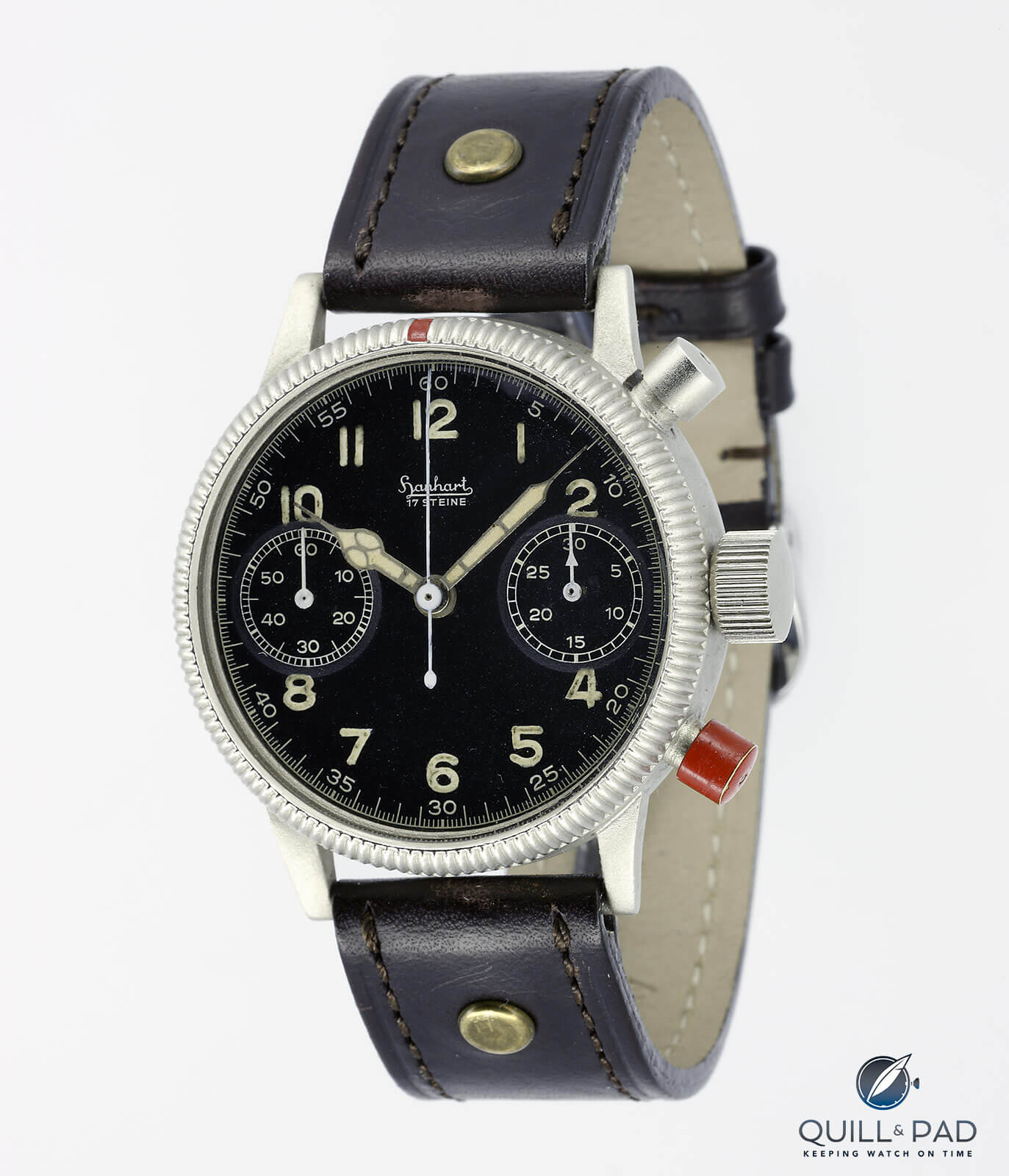
Hanhart Caliber 41 from 1939 (picture courtesy Hanhart)
Hanhart produced a few of its flieger chronographs with a single pusher (monopusher) to regulate the beginning, cease, and reset features. The monopusher fitted with Caliber 40 is taken into account way more collectible by aviation watch fans than the two-pusher chronograph fitted with Caliber 41.
Except for the producer’s identify on the dial, the watches have been additionally distinguishable by the asymmetry of the pusher – the highest pusher on Hanhart watches touches the higher proper lug, whereas the underside pusher on Tutima watches touches on the decrease proper lug.
From 1939, Hanhart chronographs have been issued to German air drive pilots and naval officers throughout World Conflict II.
Tutima was based in 1927 by Dr. Ernst Kurtz, the managing director of Urofa/Ufag (Uhren-Rohwerk-Fabrik Glashütte AG). Within the Forties, Urofa/Ufag developed flyback chronograph Caliber 59 and used this motion in Tutima watches equipped to the German navy.
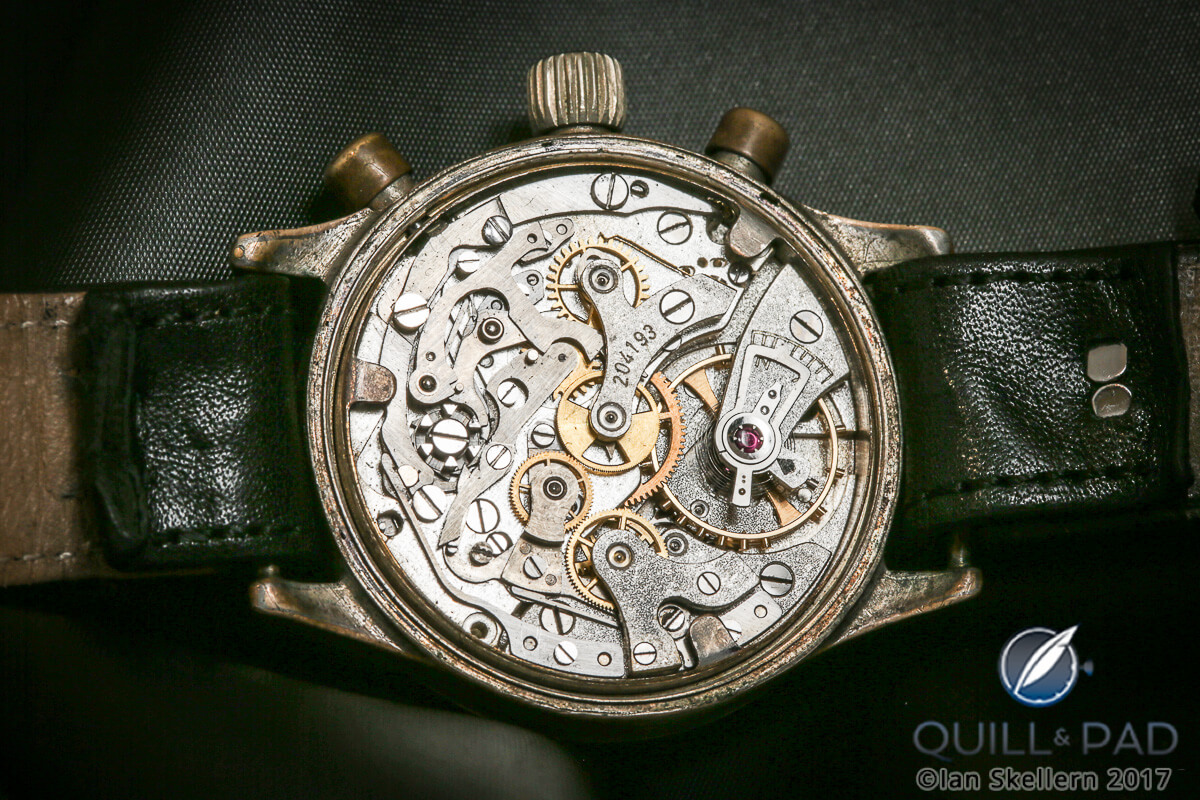
Urofa Caliber 59 in a Forties Tutima pilot’s flyback chronograph
It’s estimated that roughly 15,000 chronographs have been produced for the German Air Pressure, however following the conflict most have been returned upon completion of a pilot’s mission. Early Tutima fashions are notably wanted by collectors however are sometimes in both poor situation or closely restored. Because the case was product of nickel-plated brass, lots of them have the brass displaying by way of worn plating.
Hanhart, situated within the horologically conventional Black Forest area, manufactured two sorts of chronographs: two-pusher and a monopusher timers. The chronographs had both rotating or stationary bezels.
Earlier than the Nineteen Fifties, Hanhart chronograph circumstances have been nickel-plated brass; afterward, Hanhard switched to metal circumstances. After the conflict, the Black Forest grew to become a part of the French Occupation Zone, so Hanhart continued to supply the chronographs below the model identify Vixa for the French forces.
The post-World Conflict II watches for the German air drive have some attention-grabbing and (now/nonetheless) acquainted watch model, mannequin, and motion names. Here’s a consultant sampling.
1955: Hanhart 417
The Hanhart 417 was the primary watch issued to pilots of the reformed West German Air Pressure (Bundesluftwaffe) in 1955.
Practically similar to the wartime flieger chronographs, the 417 had developed a cult-like standing, thanks in nice half to its affiliation with Steve McQueen, who wore one within the Sixties.
The Hanhart was a decidedly pre-war design for males flying Mach 2-capable F-104 Starfighters. Therefore, Junghans was tapped as a second supplier of pilot’s watches in 1957.
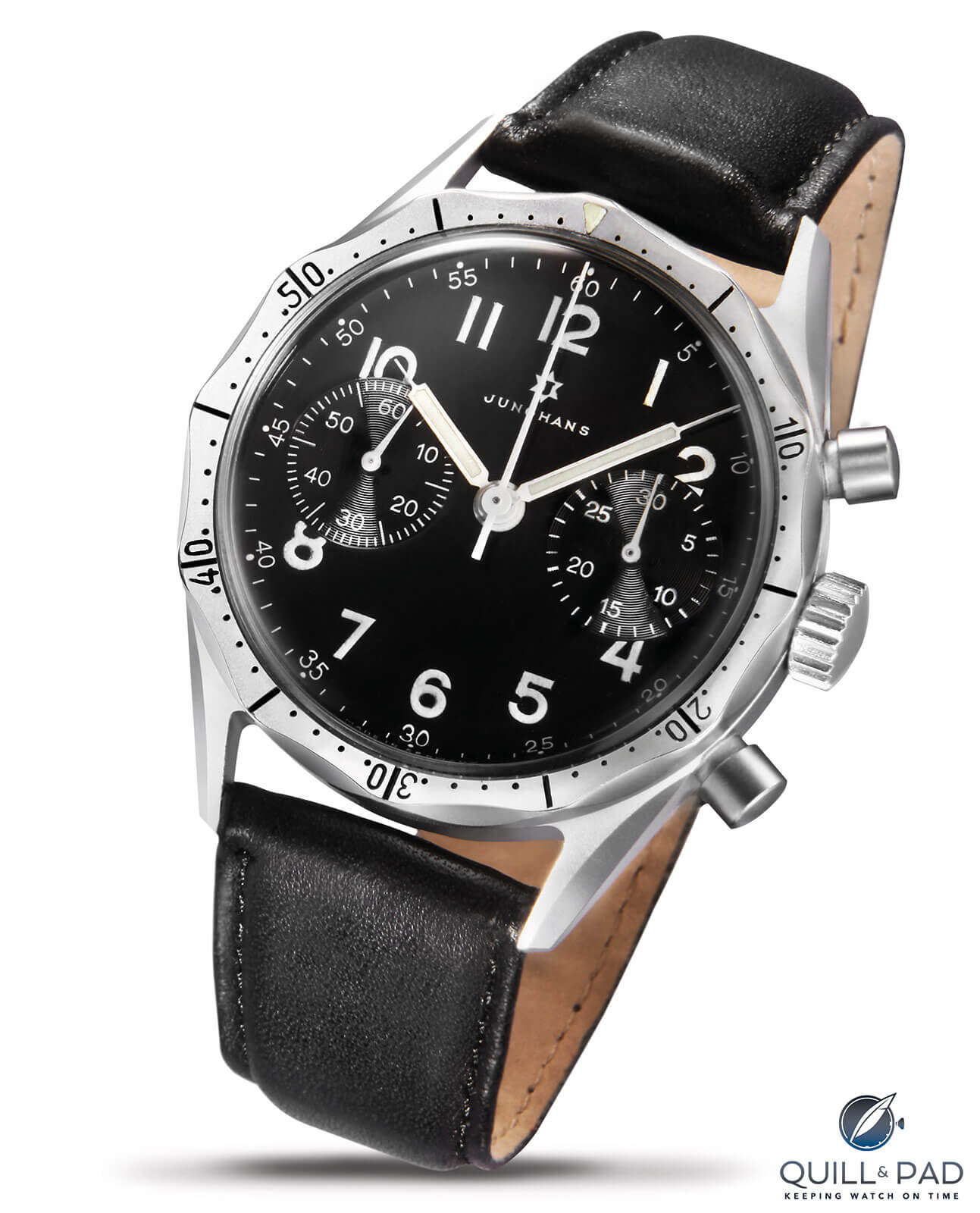
A 1955 Junghans Bundeswehr Chrono powered by Caliber J88 (picture courtesy Junghans)
1955: Junghans J88
Junghans developed the well-known column-wheel J88 chronograph motion in 1946. The Black Forest-based firm’s watches stand out to today with the bizarre 12-sided bezel.
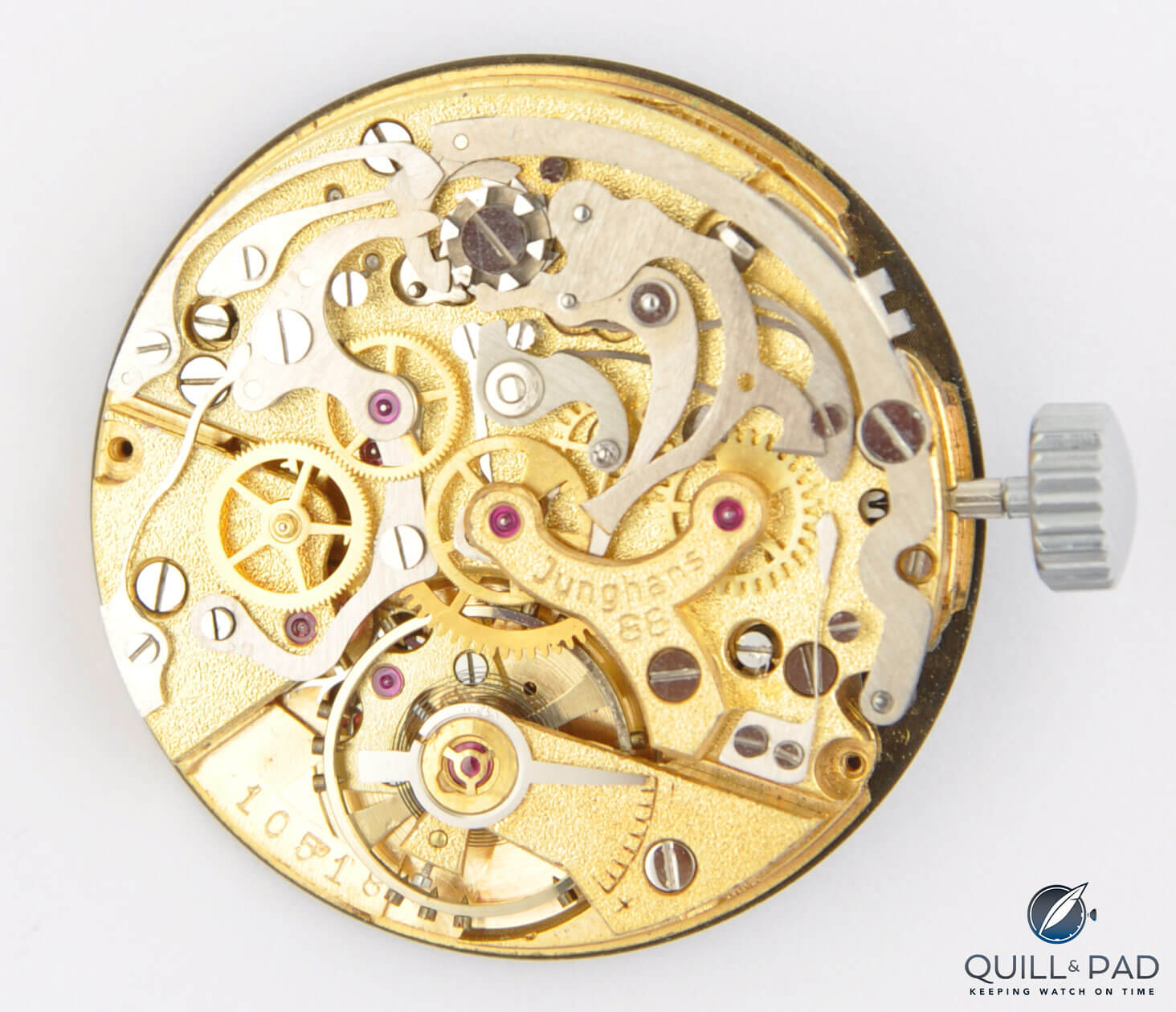
Junghans J88 chronograph motion from 1946 (picture courtesy Junghans)
This Junghans watch was issued to pilots (F-104 Starfighters) from 1957 till it was changed by the Heuer (Leonidas) Bundeswehr chronographs in 1967.
1967: Heuer-Leonidas Bundeswehr
In 1964 Heuer merged with Leonidas, a competitor who produced watches for the Italian navy. The brand new firm, referred to as Heuer-Leonidas S.A., equipped the Bundeswehr chronograph bearing the Leonidas brand to the Bundesluftwaffe in 1967. It had a 43 mm case and a hand-wound Valjoux 220 motion.
1967: Sinn 1550
Helmut Sinn was awarded a contract to service watches for the German military and took the chance to swap out the unique Heuer dials with a Sinn brand alternative. So the watch is actually a Heuer 1550SG with Valjoux 230 motion.
Helmut Sinn bought Heuer components and offered a number of Sinn-dialed 1550SG fashions to navy personnel and later to civilians.
1979: Orfina/Porsche Design
The Orfina Porsche Design “3H navy” mannequin was issued to the German navy starting in 1979. This watch was manufactured by Orfina and designed by the Porsche automotive firm design offshoot Porsche Design.
Orfina used the Lémania 5100 automated motion to energy this chronograph. Tom Cruise wore an Orfina “3H navy” as “Maverick” in Prime Gun. Many watch firms, together with Arctos, Sinn, Heuer, Nivada, Tutima, Aristo, and Lémania, cashed in on the favored lug-less design by producing their very own variations.
1982: Arctos
Arctos of Pforzheim manufactured a chronograph for the Military Air Corps of the Federal Forces of Germany. The Arctos Bund watch seemed identical to the Orfina watch and was additionally powered by the Lémania 5100 motion.
1983 and past: Tutima
Tutima obtained the contract for supplying chronographs to the airmen of the Turkish Military, Airforce, Navy, and the reconnaissance troops of the military and submarine personnel.
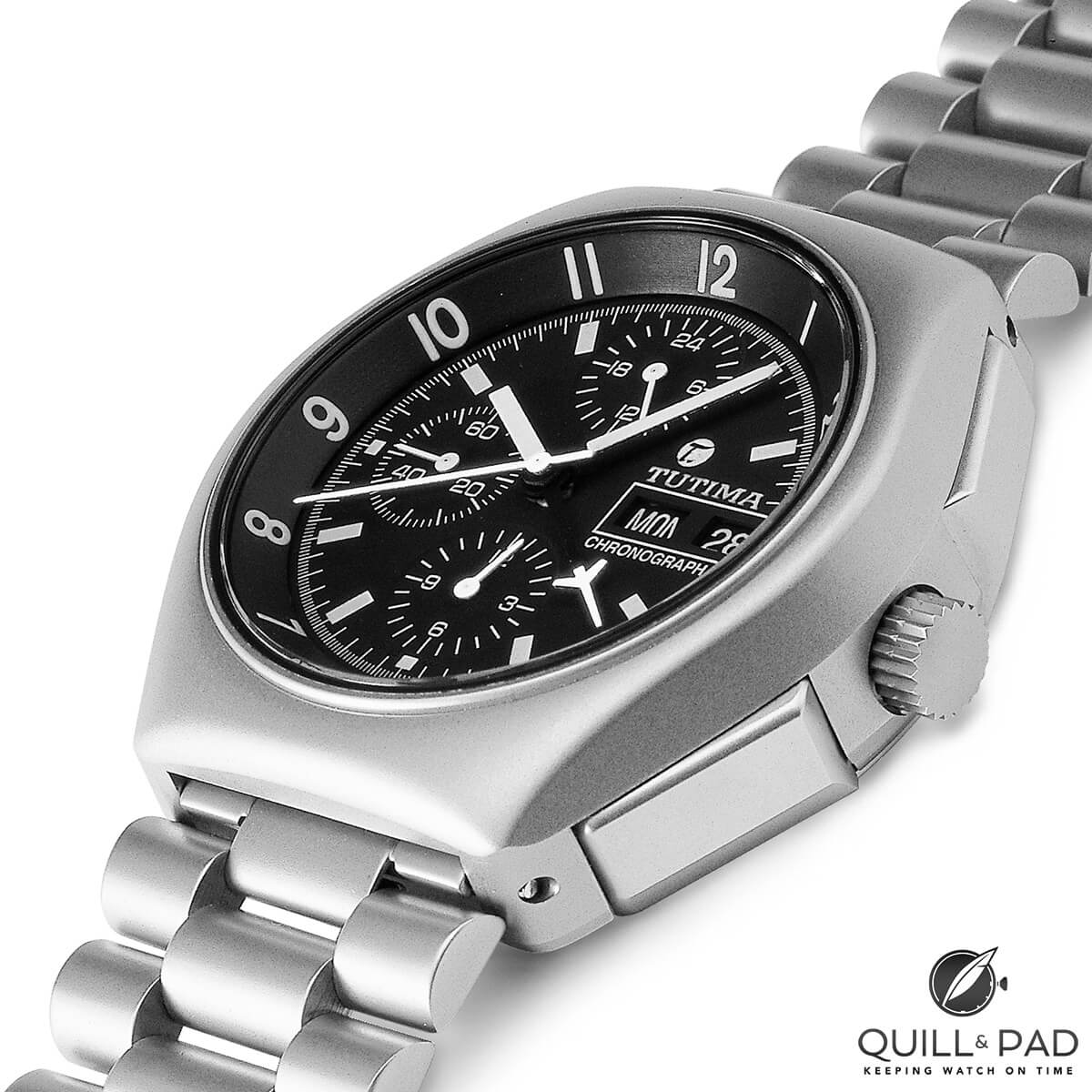
Tutima’s legendary Reference 798, a navy chronograph that grew to become the official pilot’s watch of NATO
In 1985 the German military contracted Tutima to create a brand-new navy watch, and Army Chronograph 798 was born. It has been a part of the usual tools for Bundeswehr (German armed forces) pilots ever since.
The navy stipulations of Army Chronograph 798 have been even stricter than these of the pilot’s watch of 1941. The actions of those watches have been based mostly on Lémania Caliber 5100 as nicely.

3 Pack Screen Protector Film, compatible with Rado R12.413.803 TPU Guard for Smart watch Smartwatch ( Not Tempered Glass Protectors )











